 The Mineral Hall in the Allison and Roberto Mignone Halls of Gems and Minerals at the American Museum of Natural History.
The Mineral Hall in the Allison and Roberto Mignone Halls of Gems and Minerals at the American Museum of Natural History.
Photo courtesy of D. Finnin/©AMNH
The American Museum of Natural History (AMNH) opened its Allison and Roberto Mignone Halls of Gems and Minerals to the public on June 12 after being closed for four years. Minerals and gems have been part of the AMNH collections since it was founded in 1869. The Halls underwent extensive renovation as part of the Museum's 150th anniversary. The 11,000 square-foot space features the Museum's permanent collection of minerals, gems, and meteorites totaling more than 120,000 specimens. The renovation not only showcases the Museum’s collection but provides an engaging guide to current scientific knowledge about the Earth. Multi-media presentations and interactives align with next generation science standards and can serve as a learning lab for science teacher education and professional development while being accessible to the general public.
History of the Halls
The Museum’s collection of gems and minerals is housed in the Department of Earth and Planetary Sciences. It comprises around 200,000 specimens of minerals, gems, rocks, and meteorites and is continuing to expand thanks to an active research and collecting program. Curators, research scientists, postdoctoral fellows, and graduate students study topics that include the origin of rubies in Southeast Asia, volatile gases that lead to volcanic eruptions, past changes to ocean circulation and climate, the formation of rocks in subduction zones, the differentiation of planetary bodies, and the mineral and chemical origins of the solar system.
Reimagined Spaces
Before the renovation, the collection was displayed in a warren of galleries that made it a challenge to interpret. The new Halls were designed by Ralph Appelbaum Associates with David Brody Bond as architects who worked with AMNH’s exhibition department under the direction of Lauri Halderman, the Museum's Vice President for Exhibition. The Halls are divided into three sections: the Gem Hall, the Mineral Hall, and the Melissa and Keith Meister Gallery for temporary exhibitions.
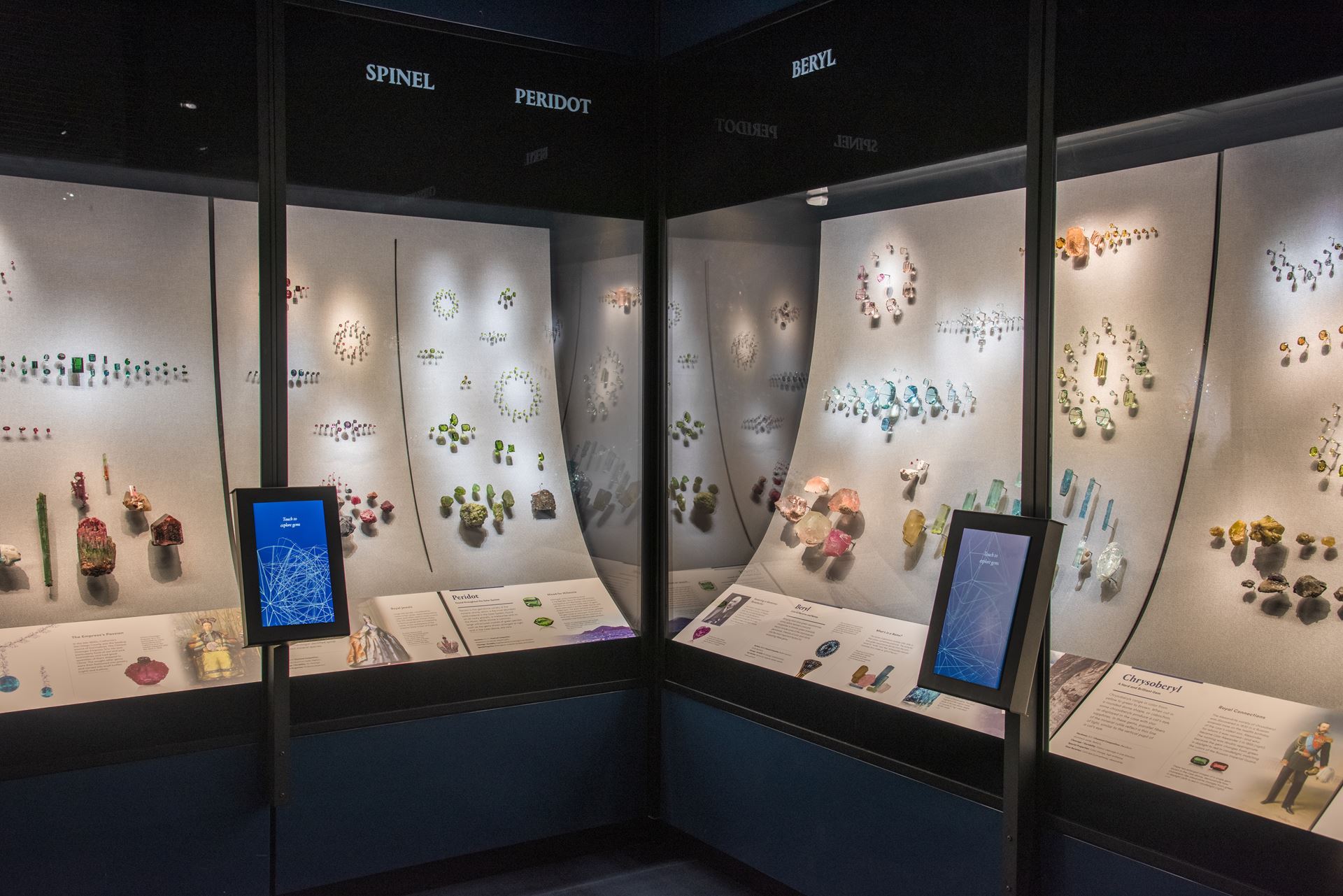
The Gems Hall in the Allison and Roberto Mignone Halls of Gems and Minerals at the American Museum of Natural History.
Photo courtesy of D. Finnin/©AMNH
The Gem Hall includes nearly 2,500 items on display and includes precious stones, carvings, and jewelry from around the world. The Mineral Hall comprises four sections: Mineral Forming Environments, Mineral Fundamentals, Systematic Classification, and Minerals & Light.
“The goal was to present minerals and gems in terms of answering what they are and then lay out the Mineral hall to address their context on Earth, organized around the environments on Earth in which they form,” said AMNH Curator George E. Harlow of the Museum’s Division of Physical Sciences who organized the Halls. “We defined five basic environments: Igneous (once molten), Weathering (chemical alteration by air and water), Hydrothermal (formed from hot water), Metamorphic (changed by mountain building and shifts in Earth’s crust), and Pegmatitic (a post-igneous condition in which large crystals grow in large spaces).” Harlow describes that the new focus cases can deal with a mineral or place and include historical connections.
“We did much more than a renovation,” said Harlow. “These are totally new Halls in the location of the old.”
 Systematic Classification Wall
Systematic Classification Wall
Along the west wall of the Hall of Minerals is the Systematic Classification display, which contains 659 specimens that represent the chemical classification system scientists use to organize Earth’s more than 5,500 mineral species. Pictured in the foreground is an orbicular granite from the Yilgarn Craton in Western Australia.
Photo courtesy of D. Finnin/©AMNH
“Mineral Forming Environments” is at the center of the Hall and is dedicated to the environments in which and process of how minerals are formed. “Mineral Fundamentals” explores overarching concepts of mineral sciences. “Systematic Classification” runs along the Halls west wall and contains 659 specimens that represent the chemical classification system that scientists use to organize the Earth’s more than 5,000 mineral species. It also has an interactive feature where visitors can explore forming minerals from the elements on the periodic table. The last section, “Minerals & Light,” is a room located off the east wall. It explores the optical properties of minerals and how they interact with light.
 Sterling Hill Fluorescent Rock Panel
Sterling Hill Fluorescent Rock Panel
The centerpiece of the Minerals & Light room is a wall-sized panel of fluorescent rock that glows in shades of orange and green, sourced from Sterling Hill in New Jersey.
Photo courtesy of D. Finnin/©AMNH
The “Minerals & Light” space uses a state of the art lighting system that incorporates cool and warm full-spectrum LEDs and sophisticated lighting controls to highlight the texture, color, and reflectivity of the minerals and gems on display. The space also uses short and long-wave ultraviolet sources that reveal colors in fluorescent minerals. The goal was to provide visitors the opportunity to experience the depth and character of the minerals and gems on display.
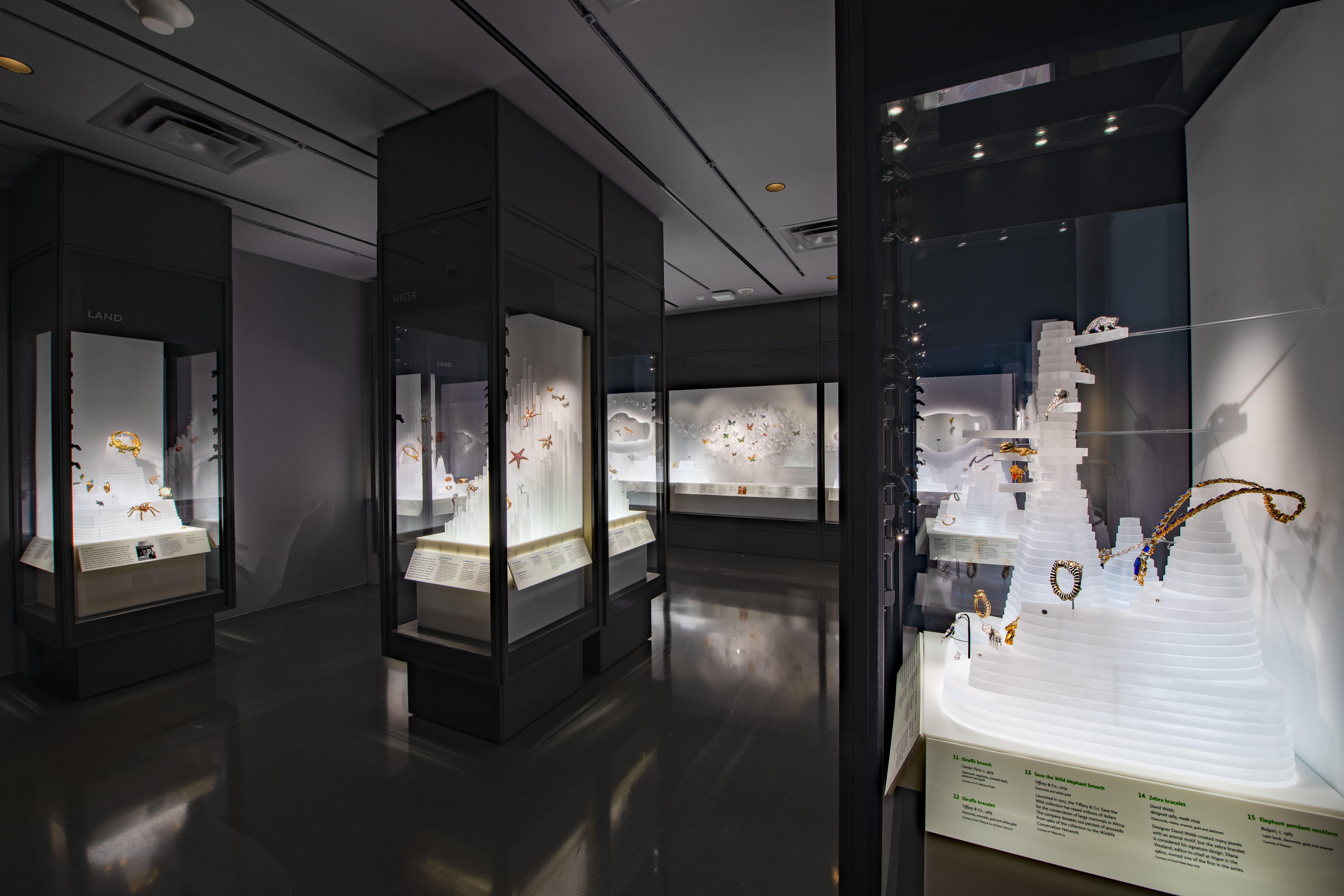 Beautiful Creatures, an exhibition of some of the world’s most spectacular jewelry inspired by animals, is on view through September 19, 2021, in the Melissa and Keith Meister Gallery. The exhibition features imaginative jewels from the world’s great jewelry houses and designers—including Cartier’s iconic panthers, Bulgari's snakes, Suzanne Belperron’s butterflies, and more.
Beautiful Creatures, an exhibition of some of the world’s most spectacular jewelry inspired by animals, is on view through September 19, 2021, in the Melissa and Keith Meister Gallery. The exhibition features imaginative jewels from the world’s great jewelry houses and designers—including Cartier’s iconic panthers, Bulgari's snakes, Suzanne Belperron’s butterflies, and more.
Photo courtesy of D. Finnin/©AMNH
The Meister Gallery houses the temporary exhibition, “Beautiful Creatures” that features designs by some of the world’s great jewelry houses and artisans. The pieces on view range from the mid-19th century to the present and are displayed into categories of animals on land, air, and water.
Educational Resource
The Hall’s exhibits, including media and interactive content, were developed to align with Next Generation Science Standards (NGSS), illustrate Crosscutting Concepts, serve as a lab for science teacher education and professional development, and make connections to other museum halls.
The Halls were designed as an educational resource for teachers and students to explore current scientific knowledge about the Earth. They Halls support current educational standards by acknowledging the interdisciplinary nature of evidence-based science. This includes: Earth science (how minerals form), chemistry (an interactive periodic table), physics (Minerals & Light gallery space–how light interacts with minerals), and biology (the role of life in the evolution of Earth’s minerals).
“When I started at the Museum, there were probably around 2,500 minerals described and now there are more than 5,000,” said Harlow. “The enhanced Halls present up-to-date science, which has progressed significantly.”
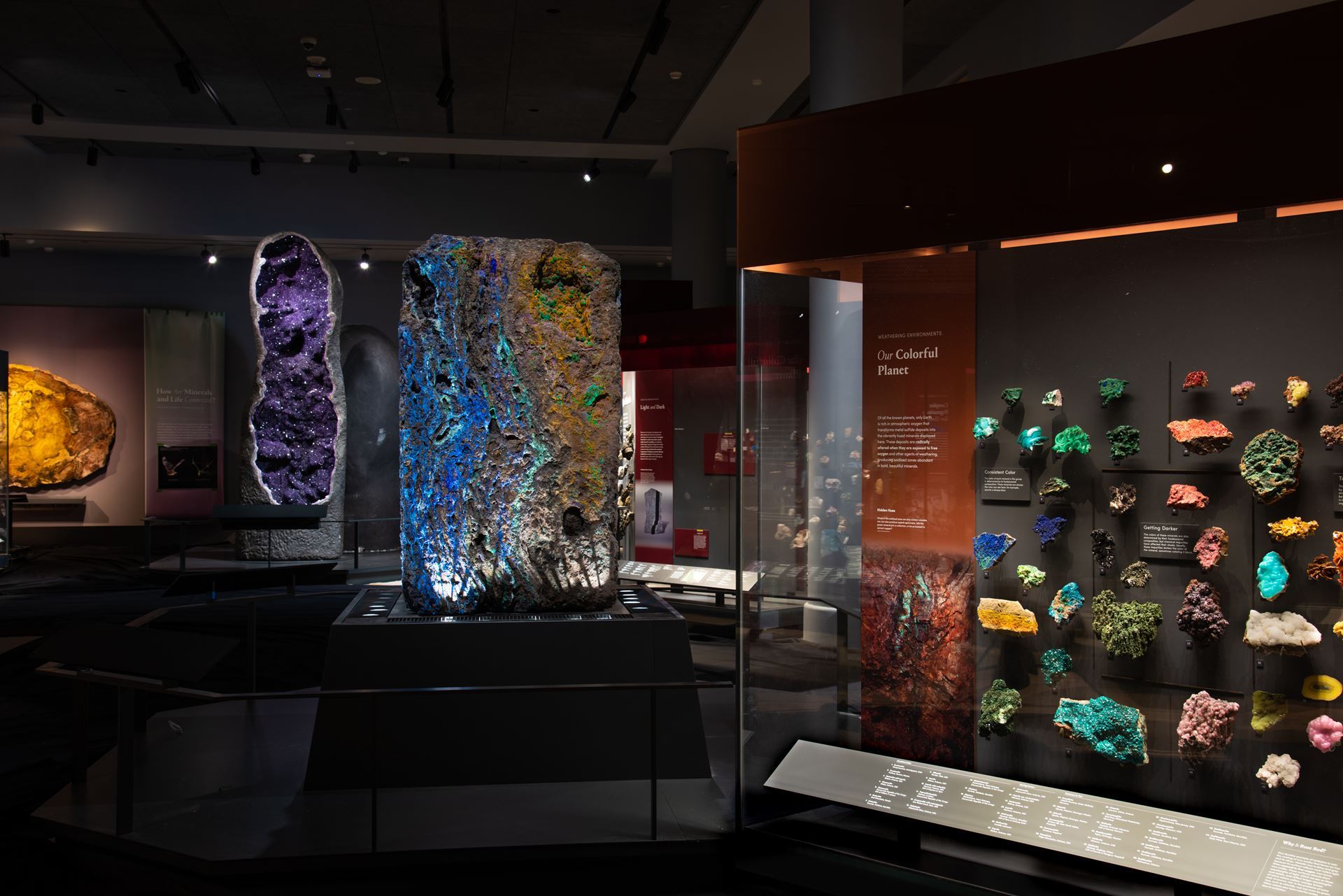
The Mineral Hall in the Allison and Roberto Mignone Halls of Gems and Minerals at the American Museum of Natural History.
Photo courtesy of D. Finnin/©AMNH
The Halls play a key role in the Museum’s Master of Arts in Teaching (MAT) Program which prepares Earth science teachers for grades 7 to 12 in high-needs schools in New York City and throughout New York State. Teachers that participate in the MAT program will use the Halls as a tangible teaching tool for their own classes once they graduate.
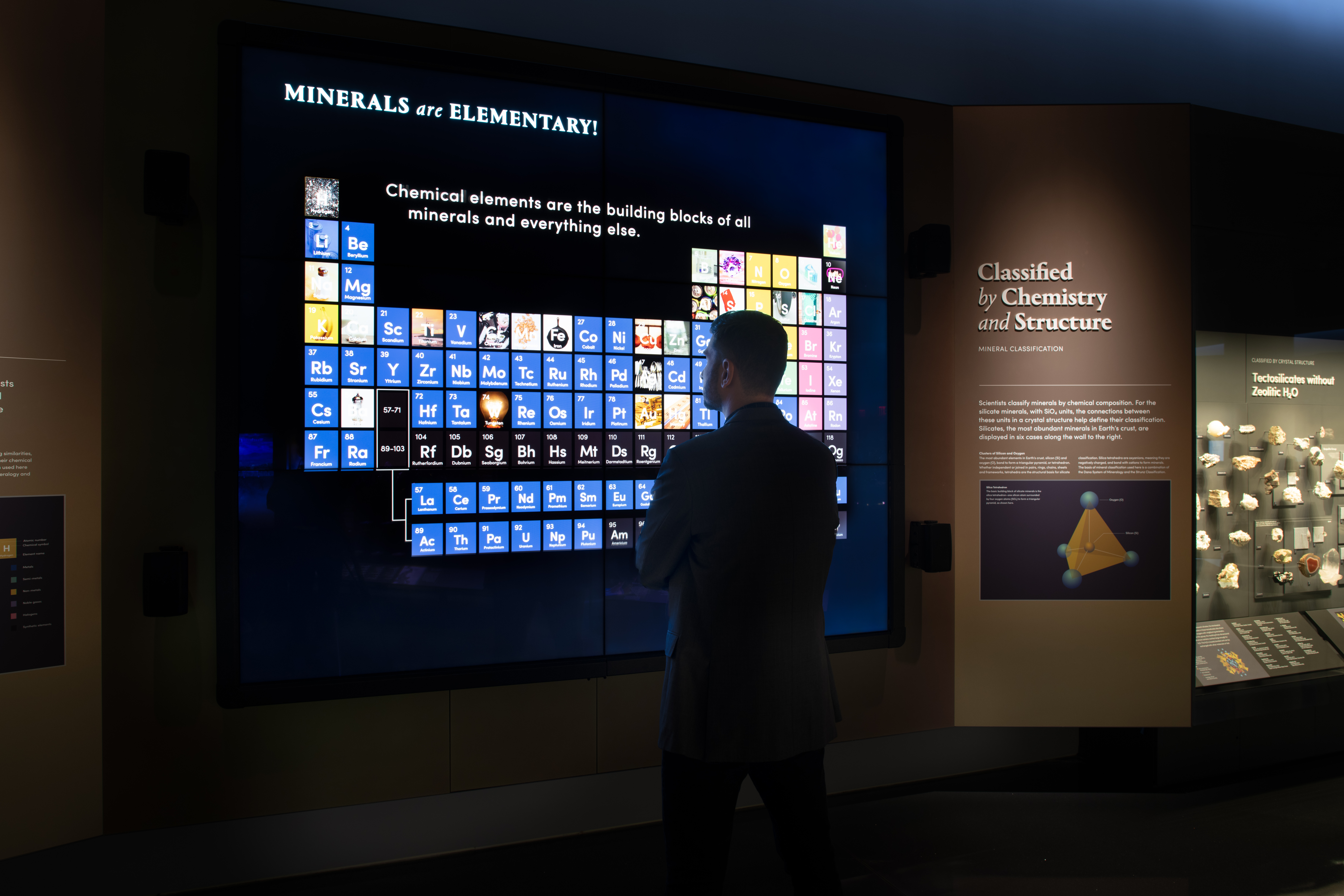 Periodic Table Interactive
Periodic Table Interactive
This interactive display illustrates the periodic table of chemical elements and allows visitors to “make minerals.”
Photo courtesy of D. Finnin/©AMNH
Into the Future
The renovation of the Halls is just one part of the physical and programmatic initiatives undertaken by AMNH for the 150th anniversary celebration. This project culminates in the opening of the Richard Gilder Center for Science, Education, and Innovation, a new 230,000 square foot facility that adds galleries, classrooms, an immersive theatre, and a redesigned library. With this new space, the Museum’s research, collections, and library spaces will be revitalized and expanded to include behind the scenes functions that will be visible and accessible to the public. The Gilder Center hopes to enhance the Museum’s capacity to partner with schools, teacher professional development programs, and out-of-state programs for students, introduce digital tools of science, and explore college and career opportunities. The Center will provide new, flexible learning spaces that are integrated with exhibitions, collections, and science labs in order to create immersive learning experiences. The Museum anticipates that the space will add 745,000 visitors annually.
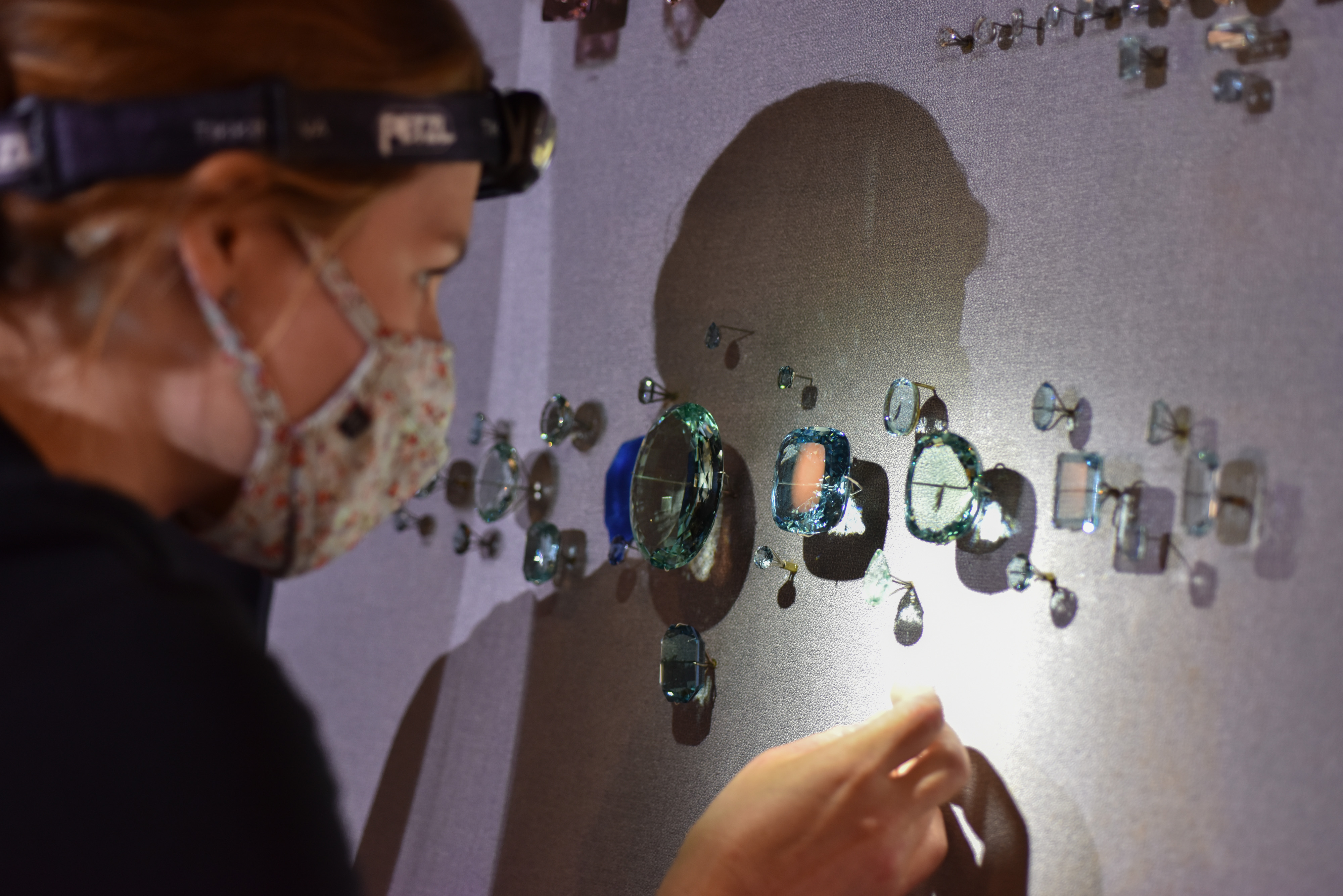 Halls Installation
Halls Installation
Exhibition staff members install specimens in the all-new Allison and Roberto Mignone Halls of Gems and Minerals at the American Museum of Natural History.
Photo courtesy of D. Finnin/©AMNH
Harlow hopes that visitors to the Halls will be greeted with a feast for the eyes with many interesting stories that are told by the minerals, including large sized specimens consistent with the geological environment. “My hope is that a visitor’s curiosity about a specimen or case will lead to the discover ‘I didn’t know that’ or ‘that is very interesting.’”
Learn more about the Halls of Gems and Minerals at the American Museum of Natural History: https://www.amnh.org/exhibitions/permanent/gems-minerals
